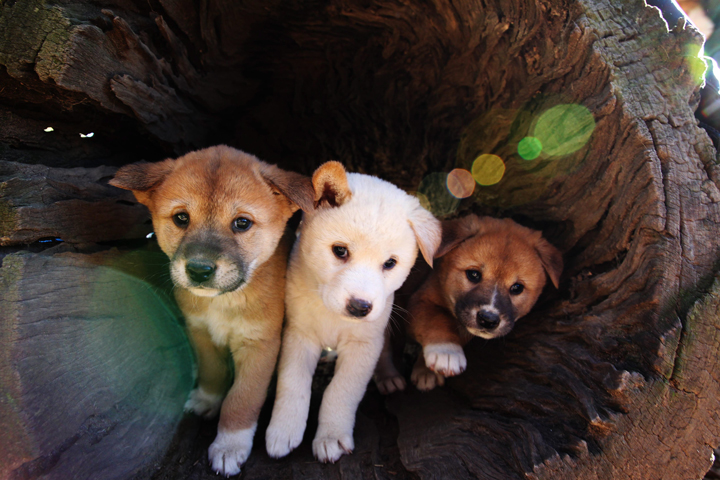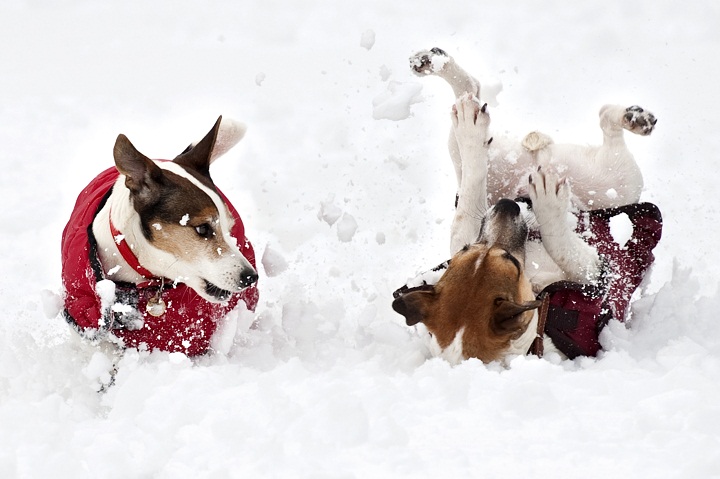TORONTO — You feel it when you see your girlfriend talking to a cute guy, when your mom compliments your sister and when your co-worker gets promoted — jealousy.

It’s often thought of as a distinctly human emotion that could turn the best of us into green-eyed monsters, but a new study suggests that dogs experience jealousy, too — especially when Fido’s relationship with his owner is on the line.
For their study, University of California, San Diego researchers studied three dozen adorable dogs to see how they’d react to watching their owners interact with other objects.
Researchers recorded the canines’ individual responses to three different scenarios: first, their owners petted and cooed over a toy dog that barked and wagged its tail; next, owners did the same with a jack-o-lantern; and finally, they watched their owners read a musical pop-up book.
In the trio of scenarios, the owners focused their attention on the task at hand while their dogs were analyzed for aggression, attention-seeking and response to the object and their owner doling out the affection.
(The study works off of previous research used to measure jealousy in six-month-old babies. In that case, babies reacted negatively when they watched their moms play with baby dolls but weren’t affected as their moms read a book.
READ MORE: Can puppies help you fight cancer? New study hopes to find out
Harris didn’t know how the dogs would react, so she decided to go with small dogs whose owners reported that they tend to be subdued. Daschunds, Chihuahuas, Pomeranians, Yorkshire terriers and mixed breeds were recruited for the study.)
Turns out, the dogs couldn’t care less if their owners were absorbed in a book. What bugged them most? Watching their owners shower love and attention to their battery-operated rivals.
Seventy-eight per cent of the dogs rushed to nudge or push their owner’s hands away from the toy dog. Thirty per cent literally created a physical distance between the two. And a quarter of the dogs resorted to aggression — they lunged, barked and snapped at the toy dog.
About 42 per cent of the dogs reacted the same way to the jack-o-lantern. But only one snapped at the book and the pumpkin.
“Many people have assumed that jealousy is a social construction of human beings – or that it’s an emotion specifically tied to sexual and romantic relationships,” lead researcher Dr. Christine Harris said.
“Our results challenge these ideas, showing that animals besides ourselves display strong distress whenever a rival usurps a loved one’s affection.”
READ MORE: New breed of guide dog helps patients with Type 1 diabetes
But keep in mind, jealousy is a complex emotion that requires a deeper level of cognition. To feel that sensation, you need to consider the strength of your relationship and analyze the threat to your relationship.
The researchers are pretty sure that what’s at play in these dogs is a rudimentary feeling of jealousy that evolved out of protecting our social bonds from potential threats.
This basic form of jealousy probably exists in other social species, too. Harris calls it a “primordial” form of jealousy — animals probably nurtured their relationships and reacted this way when they saw their parents, partners or caregivers paying attention to others.
Harris specializes in studying sexual and romantic jealousy, but it was while visiting her parents and their three border collie puppies that sparked her interest in canines, according to Slate.
“I was petting two of them, and the third would take his head and push the others away,” she said.
But not all dogs in her study responded this way. It’s hard to determine why. Maybe the dogs didn’t clue in on the happy relationship between the owner and the toy dog, or the dogs realized their threat wasn’t the real deal, Harris suggests. (But, according to Slate, 86 per cent of the dogs sniffed their enemy’s rear end, which implies that they thought the toy dogs were real.)
Other dogs could have been confident in the relationship they’d forged with their owner and may not have been worried.
Harris’ findings were published Wednesday evening in the journal PLoS One. Read the full study here.
carmen.chai@globalnews.ca
Follow @Carmen_Chai



Comments